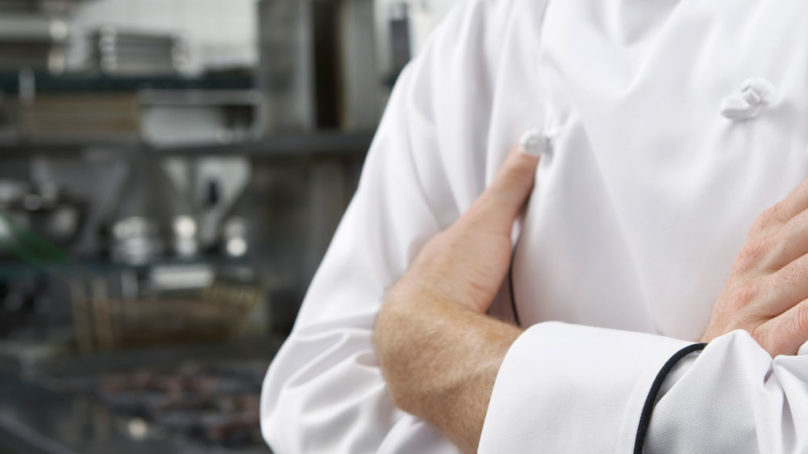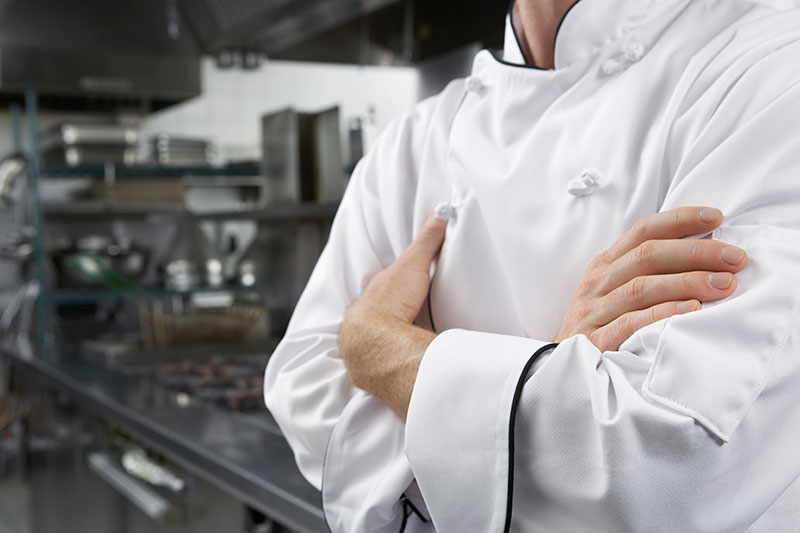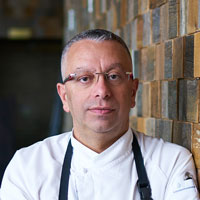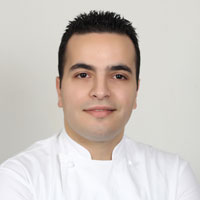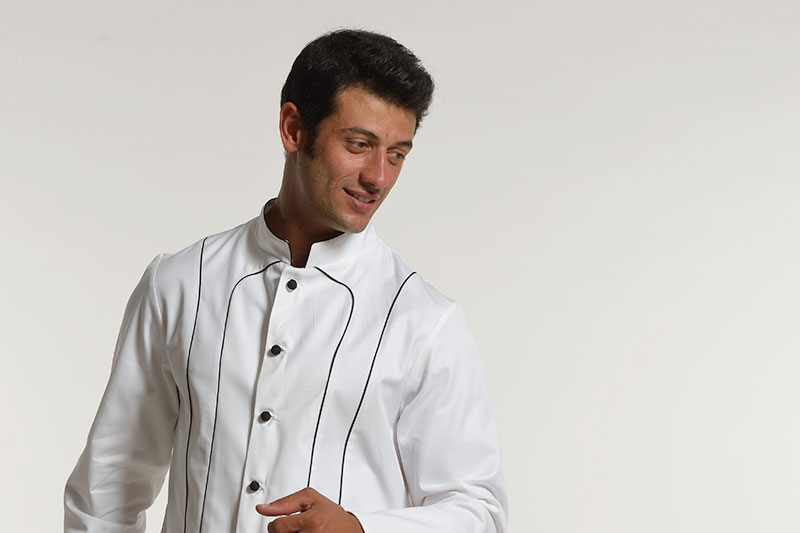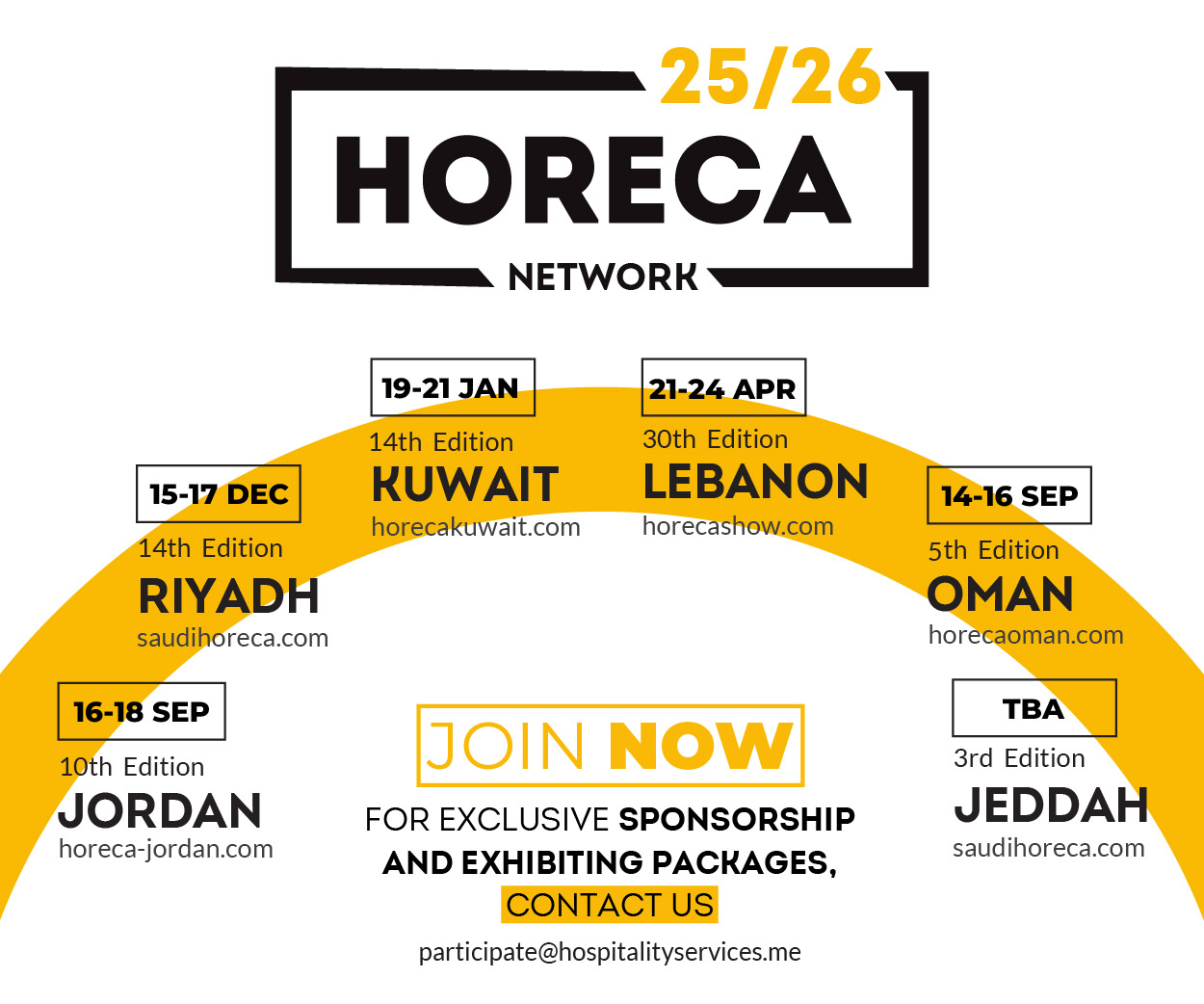There exist specific preferences related to a chef’s uniform, which arguably are as important as the tools used for preparing the food. The challenge is to customize a uniform based on numerous criteria to achieve a level of practicality, efficiency and comfort, specific to the individual needs of every chef
The major historical misconception is that whenever we see a person wearing a white coat, it immediately signifies a scientific professional of sorts. However, the white coat was first created and worn as testament to the culinary skills of an individual, a tradition that much later was adopted by specialists in other fields.
To learn more about what constitutes the ideal uniform, HN interviewed three of Lebanon’s most reputed chefs and what follows is their take on the little things that make a big difference.
Chef Paul Hage, group culinary director at Habtoor Hospitality, works in an open kitchen environment and is therefore subject to plenty of scrutiny based on his station. When choosing a fabric for his jacket, Hage explains, “Nothing beats 100 percent wrinkle-free Egyptian cotton when it comes to maintaining comfort and form. After all, whether a chef is working in an open or closed kitchen, looking presentable to the diners and to the kitchen staff is equally important.” Cementing that conviction, Joe Barza, an international master celebrity chef and culinary consultant added, “In general, Egyptian cotton is unique because it’s not only quite smooth, but is also very durable and easy to iron. However, even if the jacket is made of 100 percent Egyptian cotton, that doesn’t guarantee you’re getting the best, as the cut and design may not be suitable for the daily function you are expected to perform. In many cases, the uniform ends up looking like a pair of pajamas.”
Other equally important characteristics that should be considered might not be obvious, but in a busy kitchen environment, could make a world of difference. “I cannot stress enough, if the jacket has a percentage of polyester interwoven into the cotton, then I can guarantee you that the smell of sweat will escape through the garment, which is a revolting reality, as you would not want to eat the food of someone who smells repulsive. On that subject, because a chef is surrounded by all kinds of foods and liquids, the garment also needs to be water-repellent and smell/damp resistant,” Chadi Karam, reputed pastry chef and head of development of the brand ‘lily’s’ said.
On the matter of the jacket’s color, Hage said, “Back when the uniform was first conceived, the choice of color was instrumentally-indicative of the wearer’s station and the quality of service to expect. In other words, when in the kitchen, all members of staff are immediately alerted to the chef’s presence and when interfacing with guests, the dazzling white color indirectly communicates cleanliness, which is also reflective of the food’s quality.”
Barza, who, due to his outspoken character, could come across as someone open to wearing bright colors, surprisingly said, “I like black and white. On the one hand, the very first chef’s jacket was white. On the other hand, you can wear a black one that serves to hide food stains. I am not saying you cannot wear a red chef’s jacket, but as a classic guy, I prefer to stick to the roots of the profession and, in turn, extend it the respect it deserves.”
Karam, who is of the same mind added, “In a stressful environment that habitually gets hot, the most reflective color, which literally repels heat instead of absorbing it, is white.”
As for sleeve configuration, all three chefs are of the opinion that wrist length sleeves are the way to go. Karam elaborated on some of the merits saying, “Long sleeves are not only elegant, but also serve a very important function, namely that of protecting the wearer’s hand from accidental burns. Furthermore, I prefer mine to be somewhat roomy for additional flexibility and ease of movement.”
Highlighting another fundamental aspect related to the sleeves, Hage explained, “Maintaining a clean and hygienic environment extends to the clothes and not just the ingredients used. As such, long sleeves prevent any hair or follicles from ending up in the dish.” Putting his humorous spin on the matter, Barza remarked, “I prefer long sleeves because I feel more comfortable. On the other hand, a chef wearing a short-sleeved jacket, irrespective of cut or color, will look like a football player.”
While to the untrained eye, all chefs may look the same, the details that go into the making of these carefully crafted uniforms conceal a number of amenities specifically designed to ensure comfort without affecting performance. Addressing that matter, Hage said, “The double-padded chest layer is probably the most recognizable design feature of the jacket. Plenty of thought went into its fashioning. It primarily serves to protect its wearer from open kitchen fires, heat and splattering due to the sewn-in, non-flammable materials.”
When asked to explain the reasoning behind the design of the outer layer of the chef’s jacket that is either fastened by the classic French-knots or the more novel magnetic button design, Karam said, “That system serves two very important functions. The first allows the chef to immediately take-off the jacket in case it catches fire. The second ensures that in case of spillage, the outer layer is switched with the inner one and all goes back to normal.”
Depending on role, some chefs require the constant use of certain tools, which necessitate a number of differently-shaped pockets, variously allocated. The front jacket pocket is deep and designed to hold items such as a notepad and a stack of business cards. However, the arm pocket is segmented and used to carry a thermometer, pen and other small elongated tools.
However, not all chefs favor jacket pockets and Karam, who is of that opinion explains why. “If I’m on duty, then I’m moving all the time, so having something falling out of my breast pocket into a burning pot or a fryer would literally constitute a disaster.” On the other hand, Barza believes that, “A breast pocket is always useful, even if you don’t need it, because it will not get in the way.”
Lastly, a very important built-in feature that is necessary for any jacket is the under-arm vent system that allows heat to escape and prevents perspiration and therefore helps the chef maintain the expected level of hygiene.
In contrast to the jacket, the pants are somewhat simpler in design and feature less customization options. “For me, the pants always need to be black because it feels more proper and tidy. However, the material, unlike the jacket, should consist of a poly-cotton mix to allow for increased elasticity. As for the waist, I prefer something fixed rather than elastic,” Barza concluded. Aside from being wrinkle and soil resistant, the pants, according to Karam, “…should have pockets, not only because the jacket will be covering them, but also because if you drop something, it will fall onto the floor not the dish.”
Wrapping up the matter, Hage concluded, “Whether it’s the hat, jacket or pants, what’s important to take away from this is that not only have these items been designed for comfort and efficiency, but they’re also ultimately created to ensure a result of the highest quality.”







